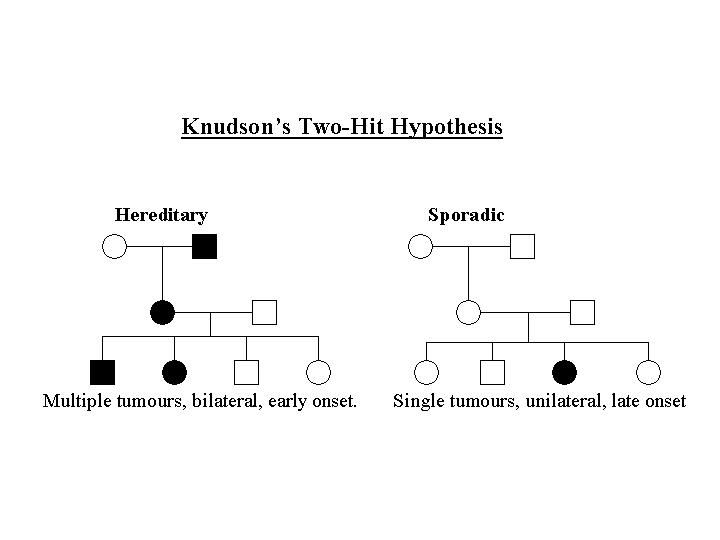In 1971 Alfred Knudson's described his “two-hit” mutation model for retinoblastoma, giving the underlining theory for genetic research. The first“hit” is a germline mutation and therefore is found in all somatic cells of the offspring. The second “hit” is a single cell mutation during the mitotic cell cycle. The chance of one mutation is greater than the chance of two. If the mutation occurs in a retinal cell, a retinoblastoma will develop(9).
Example:
In sporadic retinoblastoma
Child starts with two wild type alleles (RB+/RB+)
Both alleles must mutate to produce the disease (RB/RB)
The probability of this occuring is low, so the tumor will be in one eye
In hereditary retinoblastoma
Child starts with heterozygous allele (RB/RB+)
One one mutation is required to produce disease (RB/RB)
Mutations resulting in loss of heterozygosity (LOH) are more probable, so multiple tumors can be present in both eyes

Knudson's two-hit hypothesis. Note that the hereditary pedigree appears similar to one of a dominant trait. Suppose there are 1 million target cells and the probability of mutation is 10^-5 per cell. Sporadic retinoblastoma requires two hits and will affect 1 person in 10, 000 (10^6 × 10^-5 × 10^-5 = 10^-4 ), while the familial form requires only one hit and will be quite highly penetrant (10^6 × 10^-5 = > 1).